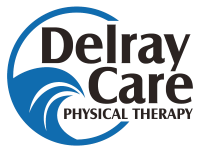A patient that I was treating for shoulder rotator cuff syndrome would complain about mid-thoracic pain while she was getting up from lying on the treatment table.
So at one of her sessions, while she was lying there, I taught her kegel exercises to help her engage her pelvic floor. I also had her press her tongue against the roof of her mouth and hold for a few repetitions. This trained her how to utilize her oral pharyngeal muscles.
Next, as she was getting up, I instructed her to simultaneously maintain the kegel contraction as she pressed her tongue against the roof of her mouth. Guess what? No pain!
Why? Because doing these actions, was a simple way to pre-engage her core. In other words, she was able to stabilize her spine while she was transferring from lying down to sitting up.
Our core is commonly thought of as the group of muscles and fascia in our trunk (transverse abdominis, obliques, multifidus, etc). However, Greg Johnson and Mary Massery, two highly respected physical therapists, teach that the muscles below and above this region are also relevant. Furthermore, they describe the core as a collection of elegant pressure systems extending up into our oral cavity.
Consequently, for our core to work correctly, ALL of its components must engage efficiently so that sufficient internal pressure is produced. Think of it as a cylindrical container that has a top and a bottom.
For example, Mary Massery describes our core much like a can of soda. Unopened, the can is extremely strong. You can actually stand on it, and it won’t collapse despite its thin aluminum walls. However, once you pop open the tab, the can is easily crushed. In this example, the tab represents improper use of one’s tongue.
This model dictates that there is more to a nicely functioning core than the muscles that form the walls of our torso. The core also needs to have an effective bottom (pelvic floor) and lid (oral pharyngeal).
Thus, engaging her pelvic floor and tongue prior to getting up from the table, offered my patient a quick and simple way to stabilize her spine and relieve her pain.

